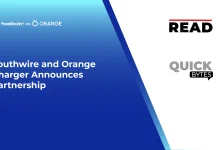The Janssen Pharmaceutical Companies of Johnson & Johnson announced that the U.S. Food and Drug Administration (FDA) has approved two pediatric indications for XARELTO (rivaroxaban): the treatment of venous thromboembolism (VTE, or blood clots) and reduction in the risk of recurrent VTE in patients from birth to less than 18 years after at least five days of initial parenteral (injected or intravenous) anticoagulant treatment; and thromboprophylaxis (prevention of blood clots and blood-clot related events) in children aged two years and older with congenital heart disease who have undergone the Fontan procedure. XARELTO® is the only direct oral anticoagulant (DOAC) FDA-approved for primary prevention of clots in pediatric patients following the Fontan procedure and the only DOAC in the U.S. to offer an oral suspension formulation for flexible, body weight-adjusted dosing options for pediatric patients.
While VTE more commonly occurs in adults, blood clots can still be a serious problem in children, affecting approximately 58 per 10,000 of those hospitalized in the U.S., with rates increasing.1 Children may be at greater risk of blood clots when suffering from other conditions, such as infectious diseases, active cancer, or after undergoing surgery, like the Fontan procedure, which is performed in children who have a single functioning heart ventricle to redirect blood flow from the lower body to the lungs.2,3
Current medical guidelines are limited and recommend that young patients with or at risk for developing blood clots be treated with standard anticoagulation therapy, such as warfarin or heparin.4 Often times, physicians have to adjust adult doses, based on limited data for these therapies for younger patients.4 Additionally, for some of these treatment options, that can mean painful injections, dietary restrictions and regular laboratory monitoring – all things that can be especially challenging for younger patients and their caregivers.4,5,6
“Historically, there has been limited guidance and options for healthcare providers on how to help reduce potentially serious, even fatal, blood clots and related events in young children,” said Andrew Van Bergen, M.D., Pediatric Cardiologist, Advocate Children’s Hospital.




